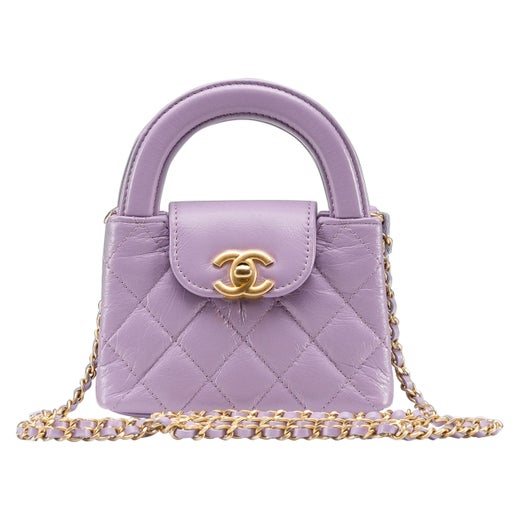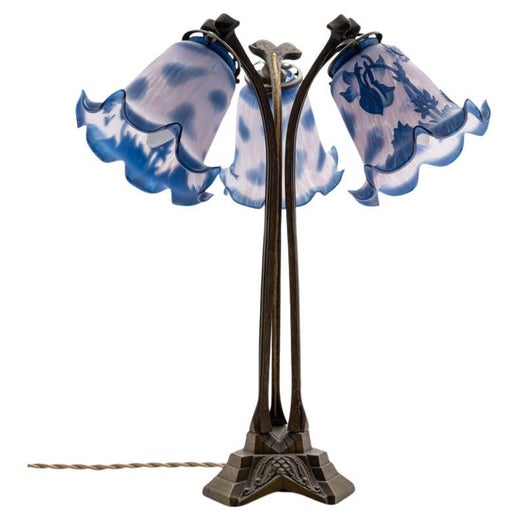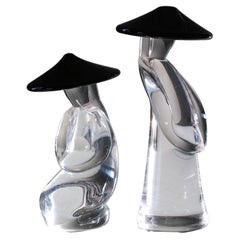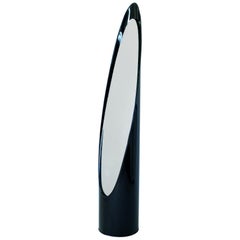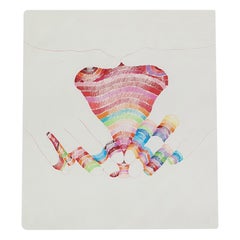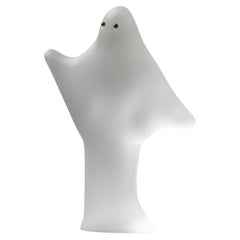Chanel Crystal Door Knobs
About the Item
- Creator:
- Dimensions:Height: 11 in (27.94 cm)Width: 8 in (20.32 cm)Depth: 10 in (25.4 cm)
- Style:Modern (Of the Period)
- Materials and Techniques:Crystal,Steel
- Place of Origin:
- Period:
- Date of Manufacture:1970s
- Condition:some scratches and chips on crystal and scratches on metal consistent with age & use.
- Seller Location:Brooklyn, NY
- Reference Number:1stDibs: U120924949512
Chanel
In the years following the opening of her modest millinery shop, Gabrielle "Coco" Chanel became a pivotal designer of both fashionable casual wear and Paris haute couture as well as an icon and arbiter of 20th-century style with her bob haircut and pearls. Today vintage Chanel handbags, jackets and evening dresses are among the most sought-after clothing and accessories for fashion lovers all over the world.
The first Chanel shop was established in 1910 in Paris on rue Cambon by the young milliner Gabrielle Chanel (1883–1971), who had picked up the nickname “Coco” while working as a club singer. The boutique drew the attention of the Parisian fashion elite who popularized her wide-brimmed Chanel Modes hats. Soon she added a sportswear store in the Normandy resort town of Deauville, where Coco set the tone for her defining sense of style — traditionally masculine garments reimagined for feminine shapes, made from simple jersey fabric.
Effortless and elegant, Chanel's designs promoted comfort and grace in women’s wear that had been dominated in the previous century by complicated layers of fabric and cumbersome corsets. She followed this success with a couture house, opened in 1915 in Biarritz.
But Chanel was not born into a life of glamour. Following the death of her mother, her father left her in an orphanage where she lived until the age of 18. It was there that she learned to sew as well as appreciate the classic pairing of black and white as worn by the nuns.
In 1926, Chanel introduced her first little black dress, reclaiming a color that had once been reserved for mourning and working-class women. That same decade, she debuted her perfume, Chanel No. 5, as well as the Chanel suit with a fitted skirt, inspired by the boxy lines of men’s clothing and employing a sporty tweed.
Chanel closed her fashion operations during World War II, then returned to the industry in 1954 to design for the functional needs of modern women.
Structure and wearability endured in all of Chanel’s clothing and accessories, like the quilted leather 2.55 handbag — a 1955 update of a 1920s-era design — with its gold-chain shoulder strap that freed up a woman’s hands. The 1957 two-tone slingback pumps had a practical heel height while offering a bold statement in the black tip of the shoes. Her collarless jacket reacted against the constricting styles of Christian Dior's New Look, replacing them with a design that was timeless, an instant classic.
After Coco Chanel died in 1971, the brand underwent several changes in leadership, including fashion designer Karl Lagerfeld, who took over as artistic director in 1983. His collections for Chanel displayed his knack for synthesizing old and new, high and low. Lagerfeld revived Chanel ballet flats and thoroughly embraced the classic logo's interlocking CCs, which took the form of a clasp featured on so many of the rare Chanel bags that are much sought after today.
Vintage Karl Lagerfeld designs for Chanel dresses, coats and other clothing of the 1980s, '90s and 2000s riffed on its iconography, accenting a lexicon of Chanel-isms with tastes of the moment. And as the 1990s have become associated with styles adopted by today’s supermodels and influencers, vintage Chanel bags of the 1990s are among the most prized of the brand’s offerings.
Over the years, the company has continued to innovate, such as expanding into ready-to-wear fashion in 1978 and, in 2002, establishing a subsidiary company — Paraffection — dedicated to preserving the heritage skills of fashion artisan workshops. The House of Chanel still operates its flagship on rue Cambon in Paris, where it all began.
Browse vintage Chanel bags, evening dresses, shoes, jewelry and other clothing and accessories on 1stDibs.
Baccarat
One of the world’s foremost crystal manufacturers, Baccarat has long been emblematic of luxury and exquisite craftsmanship. Starting in the early 19th century, objects produced by the French company — from stemware to chandeliers to brightly colored paperweights — became a staple of noble and wealthy households across Europe and as far afield as India. Along with the purity and quality of their glass, Baccarat crystal makers can boast a remarkable fluency with a range of design styles — from cut-glass neoclassical pieces to sinuously etched Art Nouveau designs.
Baccarat began as a kind of industrial development project. In 1764, the Bishop of Metz and other landowners in heavily forested northeastern France persuaded Louis XV to sanction a glassworks in the area — timber being a key resource required for the furnaces used in glass production.
In its early years the company produced humble products such as window panes and simple drinking glasses. In 1816 a new owner began making crystal, and seven years later Louis XVIII — who had taken the throne after the defeat of Napoleon — gave Baccarat its first royal commission, for tableware. In the ensuing years, an estimated one-third of the company’s workforce was dedicated to commissions to the Russian imperial court alone.
Spurred by the intense competition between global industries in the latter 19th century — fought in public view in the many world expositions of the era — Compagnie des Cristalleries de Baccarat, as it had finally become known, elevated its level of artistry by adopting new technologies and creating a rigorous training program. The firm broadened its stylistic range, embracing Asian influences and new engraving methods, and increasing production of its now iconic millefiori paperweights.
The designer Georges Chevalier, who worked for Baccarat for more than five decades beginning in 1916, ushered the company into the realm of modernist design. In recent years, Baccarat has employed such renowned contemporary designers as Philippe Starck and Marcel Wanders, ensuring that Baccarat crystal will continue to enjoy pride of place on up-to-date tables. But as you will see from the offerings on these pages, Baccarat has items to suit any taste.
Find antique Baccarat decanters, vases, candle holders, chandeliers and other furnishings and objects for sale on 1stDibs.
You May Also Like
Antique Late 19th Century English Arts and Crafts Architectural Elements
Brass
Vintage 1970s European Brutalist Architectural Elements
Brass
2010s French Modern Architectural Elements
Brass
2010s French Modern Architectural Elements
Brass
21st Century and Contemporary Moroccan Organic Modern Architectural Elem...
Brass
2010s French Modern Architectural Elements
Brass
Antique 18th Century and Earlier Tibetan Architectural Elements
Antique Late 19th Century European Architectural Elements
Bronze
Antique 19th Century European Architectural Elements
Stone, Limestone
Antique 19th Century European Architectural Elements
Stone, Limestone
More From This Seller
View AllVintage 1980s Italian Modern Figurative Sculptures
Crystal
Vintage 1970s Unknown Modern Floor Mirrors and Full-Length Mirrors
Mirror, Plastic, Fiberglass
Vintage 1960s American Modern Prints
Paper
20th Century Italian Modern Figurative Sculptures
Glass
Vintage 1980s American Modern End Tables
Formica
Vintage 1960s Indian Modern Vases
Bronze
